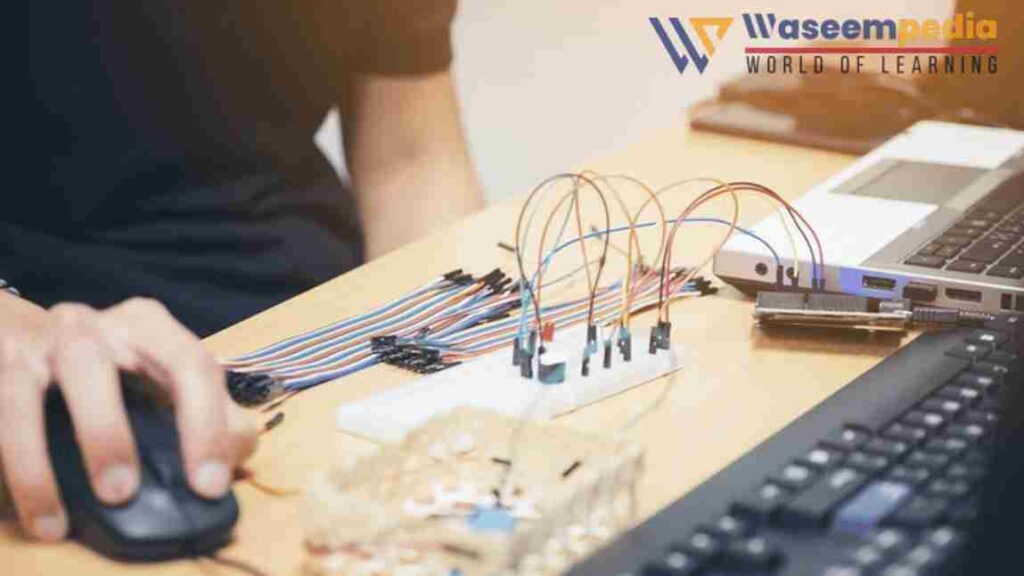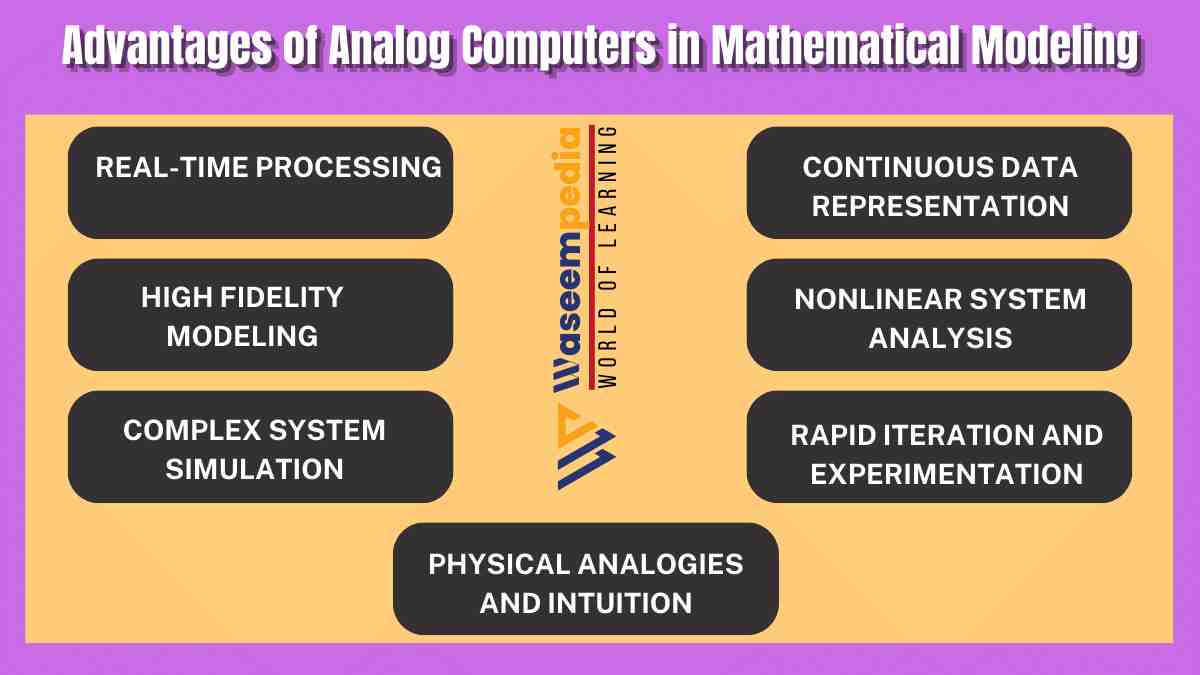Analog computers offer significant advantages in mathematical modeling, including real-time processing, continuous data representation, high fidelity modeling, nonlinear system analysis, complex system simulation, rapid iteration, and experimentation, as well as physical analogies and intuition. These advantages make analog computers highly relevant in fields where accurate modeling and simulation of complex systems are crucial.

While digital computers have become widespread, analog computers continue to provide researchers with unique capabilities for gaining insights, conducting accurate simulations, and advancing scientific knowledge.
Analog computers have long been recognized for their significant advantages in mathematical modeling. Mathematical modeling play a crucial role in various fields, including engineering, physics, biology, economics, and many more.
Analog computers offer unique benefits that make them highly suitable for mathematical modeling tasks, providing insights into complex systems and facilitating accurate simulations. In this article, we will explore the advantages of analog computers in mathematical modeling and understand why they continue to be relevant in this domain.
Mathematical modeling involves the representation and simulation of real-world phenomena using mathematical equations and algorithms. Analog computers have been widely used for mathematical modeling due to their ability to process continuous data and directly simulate complex systems. While digital computers have gained popularity, analog computers continue to offer specific advantages in mathematical modeling, enabling researchers and scientists to gain valuable insights and conduct accurate simulations.
What is Analog Computers?
Analog computers utilize continuous physical quantities, such as voltages or currents, to represent and manipulate data. Unlike digital computers that operate on discrete values, analog computers can directly model real-world phenomena with high fidelity. This ability to work with continuous signals is particularly advantageous in mathematical modeling, where precise and accurate representations of systems are crucial.
1. Real-Time Processing
Real-time processing is a key advantage of analog computers in mathematical modeling. Analog computers can process continuous data streams in real-time, allowing for immediate analysis and response to changing input conditions.
This real-time capability is especially relevant in dynamic systems where time-dependent variables and interactions play a significant role. Analog computers enable researchers to observe the behavior of the modeled system in real-time, facilitating the study of system dynamics and the evaluation of different scenarios.
2. Continuous Data Representation
Analog computers utilize continuous data representation, which is highly beneficial in mathematical modeling. Continuous data representation allows for accurate and precise modeling of systems without the need for discretization.
Analog computers can maintain the fidelity of continuous data throughout the modeling process, capturing intricate details and fine-grained behaviors of the system. This continuous representation enhances the accuracy and realism of mathematical models.
3. High Fidelity Modeling
Analog computers excel in providing high fidelity modeling of complex systems. By leveraging the continuous nature of computation, analog computers can directly emulate the behavior of real-world phenomena.
This capability enables researchers to create highly accurate models that closely resemble the system being studied. High fidelity modeling is particularly important in scientific research and engineering applications, where accurate representations of systems are essential for making informed decisions and predictions.
4. Nonlinear System Analysis
Many real-world systems exhibit nonlinear behavior, which can be challenging to model and analyze using traditional mathematical approaches. Analog computers are well-suited for analyzing and studying nonlinear systems.
The inherent ability of analog computers to process continuous signals and directly handle nonlinear relationships between variables allows researchers to gain insights into the behavior and dynamics of these complex systems. Analog computers enable the study of chaos theory, complex oscillations, and other nonlinear phenomena.
5. Complex System Simulation
Analog computers are highly effective in simulating and analyzing complex systems. Mathematical models often involve multiple interrelated variables and intricate relationships. Analog computers can handle these complexities by directly representing and manipulating continuous data, enabling researchers to simulate and study the behavior of complex systems.
This advantage is particularly relevant in fields such as physics, biology, economics, and environmental science, where understanding the interactions and dynamics of complex systems is crucial.
6. Rapid Iteration and Experimentation
Analog computers facilitate rapid iteration and experimentation in mathematical modeling. Researchers can quickly adjust system parameters, modify equations, and observe the immediate effects in real-time.
Analog computers offer a hands-on approach to modeling, allowing researchers to interact directly with the simulated environment. This iterative process of experimentation enables faster learning, optimization, and refinement of mathematical models, ultimately leading to deeper insights and better predictions.
7. Physical Analogies and Intuition
Analog computers provide a physical analogy for mathematical models, making them more intuitive and accessible. Researchers can connect the behavior of analog components to the behavior of the modeled system, allowing for a deeper understanding of the underlying dynamics.

Analog computers offer a tangible representation of abstract mathematical concepts, enabling researchers to apply their intuition and leverage physical insights to interpret the results of mathematical models.
Related FAQ’s
How do analog computers differ from digital computers in mathematical modeling?
Analog computers process continuous data and directly simulate complex systems, while digital computers operate on discrete values and rely on algorithms for simulation.
What advantages do analog computers offer in mathematical modeling?
Analog computers excel in real-time processing, continuous data representation, high fidelity modeling, nonlinear system analysis, complex system simulation, rapid iteration and experimentation, as well as physical analogies and intuition.
Why is real-time processing important in mathematical modeling?
Real-time processing enables researchers to observe the behavior of the modeled system in real-time, facilitating the study of system dynamics and the evaluation of different scenarios.
How do analog computers handle complex systems in mathematical modeling?
Analog computers can directly represent and manipulate continuous data, enabling the simulation and analysis of complex systems with multiple interrelated variables and intricate relationships.
Why are physical analogies and intuition valuable in mathematical modeling?
Analog computers provide a physical analogy for mathematical models, making them more intuitive and allowing researchers to leverage their physical insights to interpret the results.

